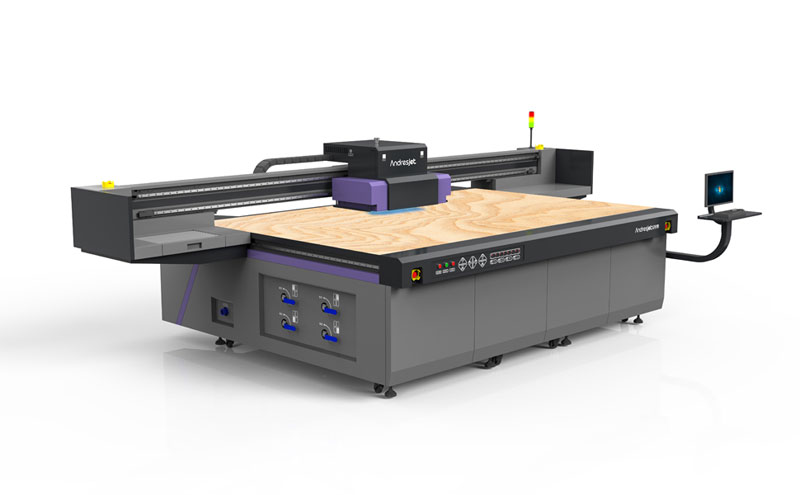UV Flatbed Printer: How to Achieve the Best Print Resolution?
UV Flatbed Printer: How to Achieve the Best Print Resolution?
In the realm of digital printing, UV flatbed printers have emerged as a versatile and efficient solution for producing high-quality prints on various materials. These printers utilize ultraviolet (UV) curing technology to instantly dry ink as it is applied, resulting in vibrant, durable prints that can withstand the test of time. However, achieving the best print resolution with a UV flatbed printer is not solely dependent on the machine itself; it also involves understanding key factors that influence print quality and implementing best practices throughout the printing process. This article delves into the intricacies of UV flatbed printing and provides insights on how to optimize print resolution.

Understanding UV Flatbed Printers
UV flatbed printers are designed to print directly onto flat or slightly curved surfaces, making them ideal for materials such as glass, plastic, metal, wood, and even certain textiles. The technology employs UV-curable inks that are cured (dried) immediately upon exposure to UV light. This instant curing process eliminates the need for heat or air drying, reducing the risk of ink smudging or bleeding and enabling precise control over ink deposition.
Key Factors Influencing Print Resolution
Printer Resolution Settings: The native resolution of a UV flatbed printer, typically expressed in dots per inch (DPI), is a crucial factor. Higher DPI settings result in finer detail and sharper images. Adjusting the printer’s resolution settings according to the specific requirements of the print job is essential.
Ink Quality: The type and quality of UV-curable ink used significantly impact print resolution. High-quality inks ensure consistent color output, better adhesion to substrates, and reduced ink bleeding, thereby enhancing overall print sharpness.
Print Head Technology: The precision and design of the print head directly affect ink deposition accuracy. Advanced print heads with smaller nozzles can deposit ink more precisely, leading to higher resolution prints.
Substrate Preparation: Properly preparing the surface to be printed is vital. Cleanliness, smoothness, and appropriate pretreatment (if required) ensure that the ink adheres uniformly, preventing issues like banding or uneven color saturation that can detract from print resolution.
Calibration and Maintenance: Regularly calibrating the printer and maintaining it according to manufacturer recommendations ensures consistent print quality over time. This includes cleaning print heads, checking ink levels, and replacing worn parts as needed.
Best Practices for Achieving Optimal Print Resolution
Choose the Right Printer and Ink: Invest in a UV flatbed printer known for its high-resolution capabilities and use inks specifically designed for UV printing. Research different models and consult with manufacturers to find the best fit for your specific printing needs.
Optimize DPI Settings: Experiment with different DPI settings to find the optimal balance between print speed and resolution. While higher DPI settings yield sharper prints, they also increase print time. Determine the minimum DPI required for your application to maintain efficiency.
Prepare Substrates Thoroughly: Ensure that the printing surface is clean, dry, and free from dust, oils, or contaminants. For certain materials, applying a pretreatment or primer may be necessary to improve ink adhesion and overall print quality.
Utilize High-Quality Image Files: Start with high-resolution image files to avoid introducing blurriness or pixelation during the printing process. Use vector graphics for text and logos to ensure they scale without losing quality.
Implement Color Management: Calibrate your printer and computer display to ensure accurate color reproduction. Use ICC profiles specifically designed for your printer and ink combination to manage color consistently across different print jobs.
Control Environmental Factors: Maintain a stable printing environment, as temperature and humidity can affect ink curing and print quality. UV printers typically require specific environmental conditions for optimal performance.
Regularly Clean and Maintain the Printer: Follow the manufacturer’s recommended maintenance schedule to keep the printer in top condition. This includes cleaning print heads, checking for clogged nozzles, and replacing worn components promptly.
Perform Test Prints: Before commencing a large print job, perform test prints to assess print quality and identify any potential issues. Adjust settings as necessary based on the test results.
Consider Print Mode and Speed: Some UV flatbed printers offer different print modes that prioritize speed or quality. Select the mode that best suits your current job requirements, balancing production time with print resolution.
Post-Print Handling: Properly handle printed materials after printing to avoid damaging the freshly cured ink. This may include allowing sufficient time for the ink to fully cure and avoiding exposure to extreme temperatures or chemicals that could degrade the print.
Conclusion
Achieving the best print resolution with a UV flatbed printer is a multifaceted process that involves selecting the right equipment, optimizing printer settings, preparing substrates appropriately, and adhering to best practices throughout the printing workflow. By understanding the key factors that influence print quality and implementing the strategies outlined in this article, you can maximize the capabilities of your UV flatbed printer, producing vibrant, high-resolution prints that meet or exceed your clients’ expectations. Remember, achieving optimal print resolution is an ongoing process of experimentation, learning, and adaptation to new technologies and materials.
